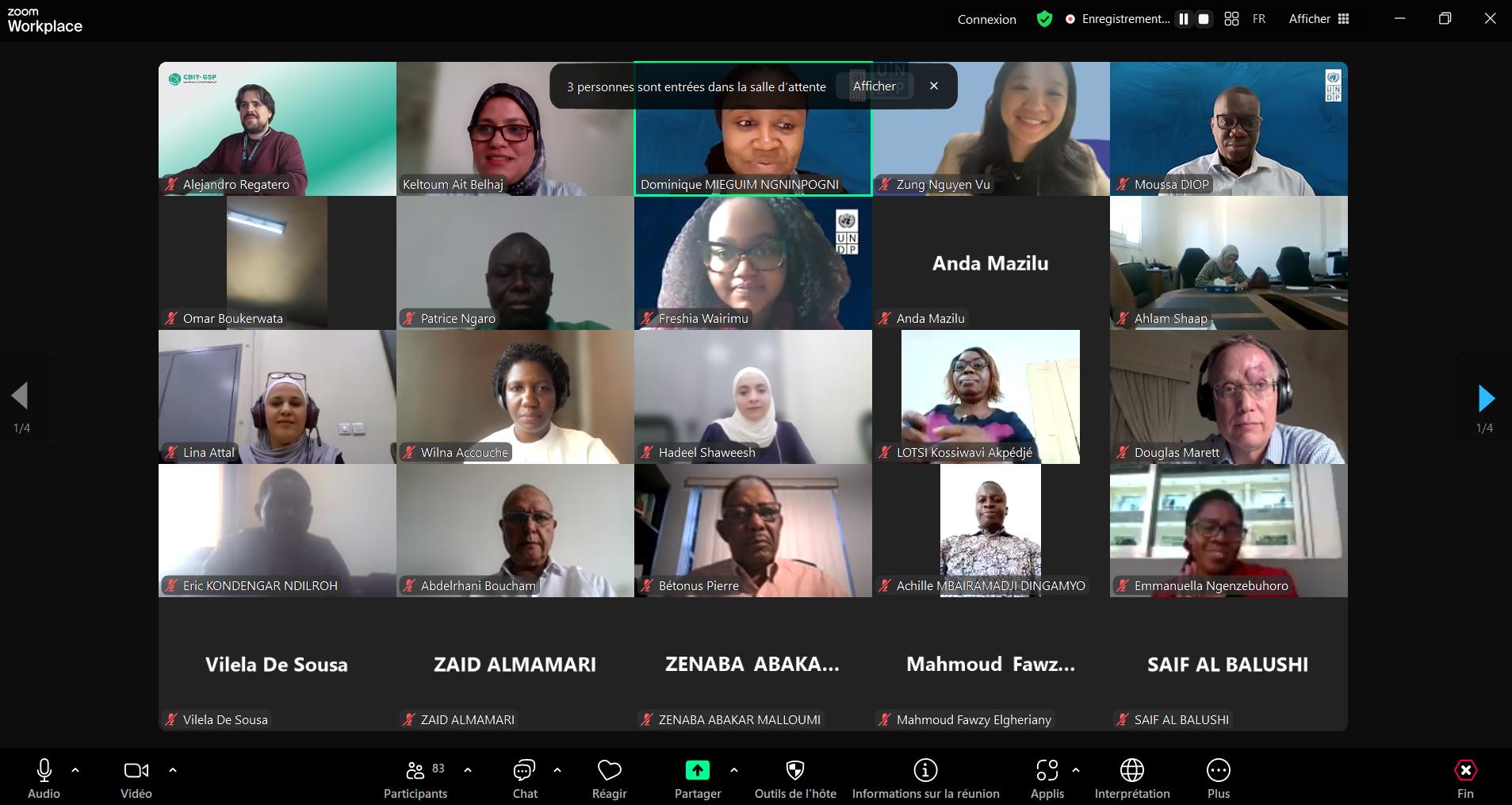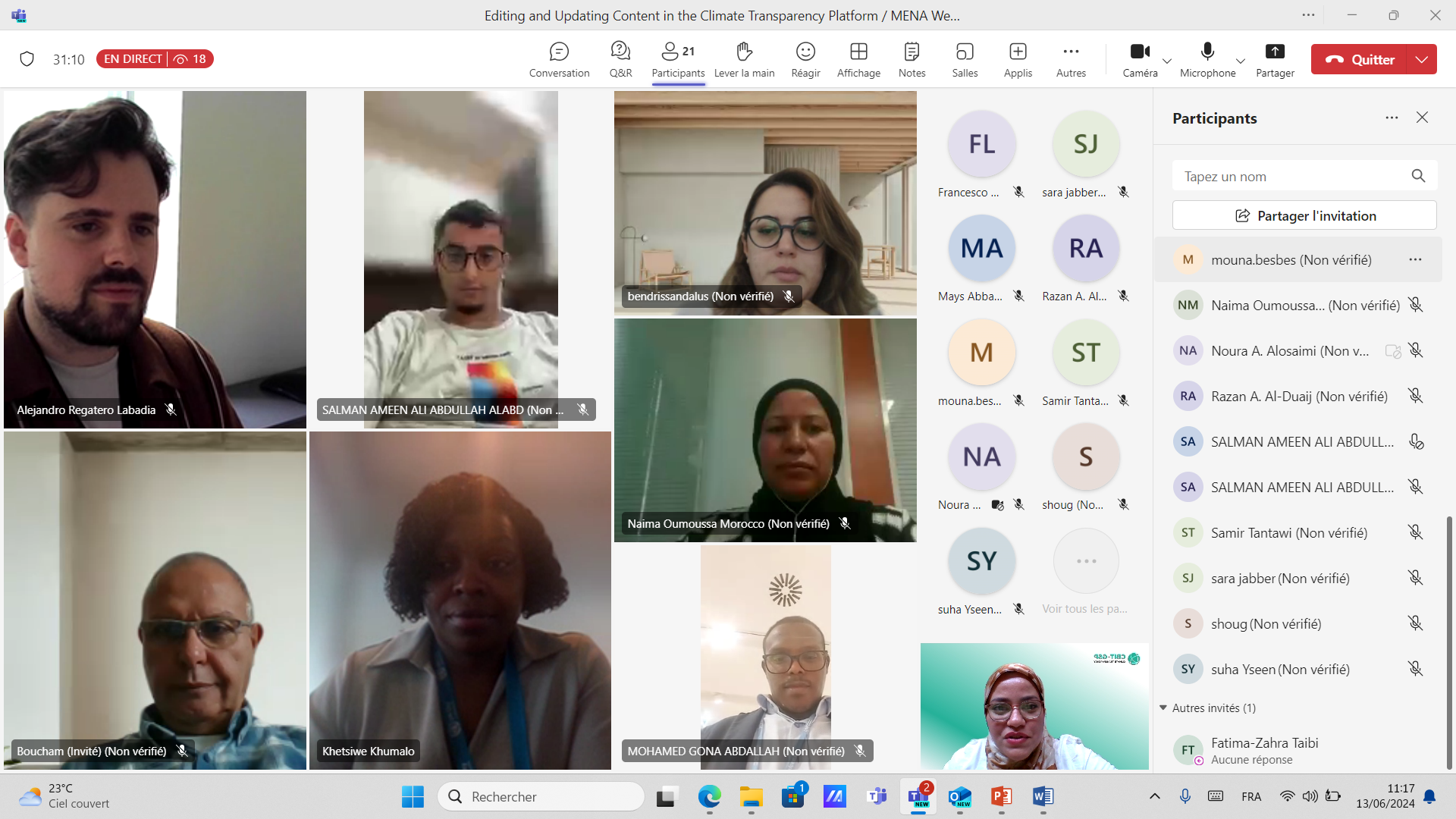Featured
No records found.
Project Details
Project Website
See in GEF websiteImplementing Agencies
Projects News, Events & Opportunities

Events
Webinar
Location: Online

Events
Webinar
Location: Online

Events
Webinar
Location: Online
Project Indicators
INDICATORS ON PROJECT RESULTS
| Indicator | Target | Baseline | Value | Source of verification |
|---|---|---|---|---|
| Quality of Lebanon’s GHG inventory has improved, with institutional arrgts | 4 | 2 | 3 | UNDP country office oversight of annual reports |
| # direct project beneficiaries (disaggregated by gender) | 120 (40% women) | 11 | 60 (46% women) | UNDP country office oversight of annual reports |
| Number of baseline assessment report | 1 | 0 | 1 | Report validated by concerned stakeholders |
| Number of agreements drafted with key ministries | 2 | 0 | 0 | Agreement text validated by concerned ministries |
| number of terms of references for MRVCE and MRV network of partners drafted | 2 | 0 | 0 | ToRs validated by concerned stakeholders |
| Number of experts trained on 2006 IPCC guidelines (disaggregated by sex) | 48 (40% women) | 11 | 0 | UNDP country office oversight of annual reports |
| Number of government staff and sectoral experts trained on policy progress tracking, GHG quantification of projects and strategies | 48 (40% women) | 0 | 0 | UNDP country office oversight of annual reports |
| Number of training materials produced for institutional sustainability | 3 | 0 | 0 | Training materials disseminated to stakeholders |
| Number of transparency strategic framework developed | 1 | 0 | 0 | Validated by MRV network of partners |
| Number of emission factors developed for key categories (at least) | 3 | 1 | 1 | Validated by GHG inventory experts through consultations |
| Number of activity data sets for key categories collected from primary sources and significantly improved (at least) | 7 | 5 | 6 | Validated by GHG inventory experts through consultations |
| Number of NDC policies for which indicators have been identified or developed | 7 | 3 | 3 | Validated by concerned stakeholders |
| Number QA/QC procedures for inventory and NDC tracking developed | 2 | 1 | 1 | Validated by concerned stakeholders |
| Number of pages developed of MISCA data entry | 7 | 1 | 0 | Validated by concerned stakeholders |
| Number of shared experiences with developing countries through several formats | 4 | 0 | 2 | UNDP country office oversight of annual reports |
Project Implementation
STATUS OF PROJECT OUTPUTS AND ACTIVITIES
1.1 Established national transparency framework in line with national priorities.
50%
1.1.1 Transparency baseline established and priorities set.
1.1.1.a. Analysis of quality of information in GHG inventory
100%
1.1.1.b. Assessment of NDC policies’ status, and category prioritization for developing progress indicators
50%
1.1.1.c. Overview of climate finance tracking
0%
1.1.1.d. Synopsis of existing institutional arrangements and recommendations
50%
0%
1.1.2 National MRV system established through an MRV network of partners for information sharing on mitigation, adaptation and support.
1.1.2.a. Establishment of the MRVCE
25%
1.1.2.b. Identification of MRV-network of partners
25%
1.1.2.c. Drafting of institutional terms of reference for the MRVCE and for the MRV network of partners
0%
1.1.2.d. Recommendations for institutionalizing the flow of climate information
25%
1.2 Enabled national institutions to implement transparency related activities.
0%
1.2.1 National institutions, capacities built for the preparation of sectoral GHG inventories using the 2006 IPCC guidelines.
1.2.1.a. Delivery of a series of trainings on the 2006 IPCC guidelines for energy, industry and wastewater
0%
1.2.1.b. Provision of enhanced 2006 IPCC guidelines training
0%
0%
1.2.2 National institutions, capacities built to track and report progress of mitigation and adaptation actions and support received.
1.2.2 a. Provision of a series of trainings on 1) tracking progress of mitigation policies, and 2) identifying, prioritizing and developing corresponding progress indicators
0%
1.2.2.b. Provision of a series of trainings on the quantification of GHG emissions from strategies and projects
0%
1.2.2.c. Provision of a series of trainings to quantify resilience progress and share best practices from other countries
0%
50%
1.2.3 Long-term transparency strategy developed.
1.2.3.a. Development of a transparency strategy
25%
1.2.3.b. Ownership of strategy by stakeholders
0%
2.1 Improved capacities to monitor and track GHG inventory and mitigation and adaptation activities.
33%
2.1.1 Parameters to enhance GHG inventories developed (AD, EF, etc.)
2.1.1.a. Development of emission factors and activity data for the energy (transport), waste and industrial sectors
50%
50%
2.1.2 Methodologies for QA/QC and uncertainty analysis developed.
2.1.2.a. Development of QA/QC procedures
100%
2.1.2.b. Development of a step-wise approach to undergo an uncertainty analysis for the GHG inventory
0%
2.1.2.c. Development of QA/QC practices for tracking progress of the NDC and support received
100%
50%
2.1.3 Indicators to track implementation progress of mitigation and adaptation activities and support received developed.
2.1.3.a. Establishment and/or enhancement, and prioritization of progress indicators for mitigation and adaptation actions
50%
2.1.3.b. Assessment and prioritization of indicators for tracking finance, technology transfer and capacity-building
0%
0%
2.1.4 Web-based knowledge platform designed to share, store and analyze data and indicators.
2.1.4.a Expansion of MISCA to include pages for at least two more mitigation sectors, 2 pages for adaptation sectors, a support page and a repository of information
25%
2.2 Project results disseminated to increase global cooperation.
50%
2.2.1 Information on the project implementation, best practices, and lessons learned shared with other parties and initiatives through the Global Coordination Platform and other South-South cooperation network.
2.2.1.a.Sharing best practices elaborated through CBIT with other developing countries on different platforms project document
0%
